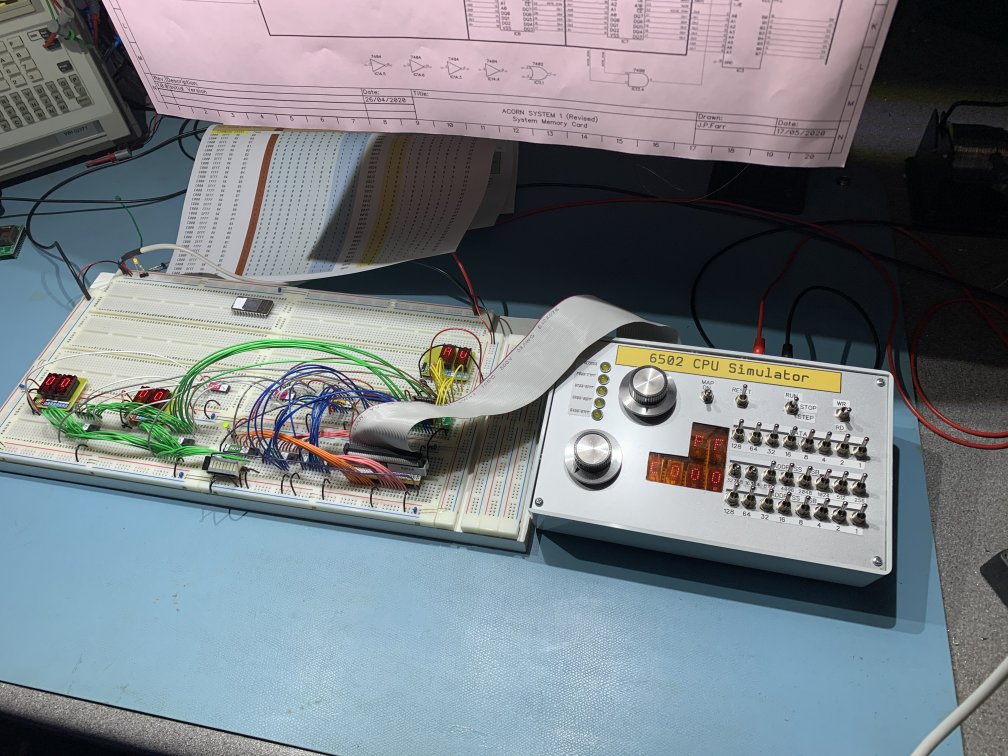Last week I’d had enough of that Dataman programmer. It would sometimes work but more often that not Windows would fail to recognise the programmer. I’d tried it on Windows XP and three different Windows 10 machines (one was a brand new out the box machine) and it was always the same. So I sent their tech support people an Email saying fix it, or they were getting it back. I got a lovely immediate reply suggesting I download the latest software from their site, which I did (even though the version I had was only two weeks old), and hey-presto, problem sorted. Have used the programmer several times and it’s worked perfectly each time.
I’ve also been working on my Acorn System 1 storage expansion card; and I needed a working EPROM/EEPROM programmer so I could flash an EEPROM that contains the boards memory map

Whilst it looks like just a jumble of wires, it does work, so far, and I’m rather proud of it.
The CPU simulator on the right is designed to allow me to wiggle all the Address, Data and Control signals. It makes it really easy to set up known signal patterns to a project under test, and then poke around with a scope lead and see what’s going on. It connects to the breadboard via a ribbon cable which can be removed, allowing the project to be hooked to a special expansion card that plugs into the computers backplane.
There will be a full breakdown of how this board works (assuming it does work) soon, but in brief the board contains RAM and EEPROM which are both broken into pages. When completed the card will occupy around 56K of space in the memory map, but will contain around 8Mb of EEPROM/RAM that can be brought in and out of the map as pages.
The two, two digit LED displays on the left show the page numbers for the RAM and EEPROM. The Two digit display at the tope of the board shows the offset that is applied to the memory to allow access to the right page.
All the buffering and decoding logic, as well as some debugging displays/leds etc are on that breadboard including a flash memory that is used to calculate the offsets into the EEPROM/RAMs. The only two components that are missing are the actual EEPROM and RAM chips. They get added next and then I’ll find out if this actually works.

Leave a Reply
You must be logged in to post a comment.